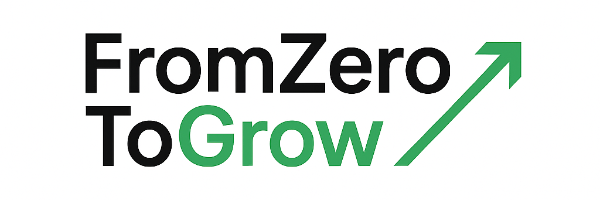How Side Hustles Help Career Transitions
Explore how side hustles provide financial stability, skill development, and networking opportunities during career transitions.

Side hustles are a smart way to navigate career transitions. They provide extra income, help you build new skills, and create networking opportunities - all while giving you more control during uncertain times. Whether you're switching industries, retraining, or recovering from a layoff, a side hustle can ease financial stress and prepare you for your next move.
Key Benefits of Side Hustles:
- Financial Stability: Earn extra income to cover expenses or build savings during career shifts.
- Skill Development: Gain hands-on experience in areas like marketing, project management, or tech.
- Networking Opportunities: Connect with clients, peers, and industry professionals who can open doors.
- Mental Health Boost: Stay productive, build confidence, and maintain structure during transitions.
Popular Side Hustles in the U.S.:
- Freelancing (e.g., writing, design, web development)
- Gig work (e.g., ride-share driving, food delivery)
- Consulting or coaching in your field
- Online tutoring or course creation
- E-commerce or reselling
Choosing the right side hustle involves aligning it with your career goals, available time, and financial needs. Use your side hustle experience to strengthen resumes, showcase skills, and build a portfolio that stands out in job applications. By starting small and staying consistent, you can turn a side hustle into a stepping stone for your next career chapter.
From Side Hustle to Full-Time Business: My Career Change Story | Jyoti Maheshwari
Financial Stability Through Side Hustles
Career transitions often come with financial uncertainty - whether it's covering rent or taking on a lower-paying role. Side hustles can act as a financial safety net, giving you the flexibility to navigate these changes with less stress.
Building Emergency Savings
Side hustles turn your free time into extra income, making it easier to grow your emergency savings. Experts suggest setting aside three to six months' worth of living expenses, but hitting that target can be tough for many. By adding side hustle earnings to your primary income, you can reach this goal faster. This extra cushion can cover unexpected costs or even fund opportunities like certification programs or industry events. With financial security in place, you'll be in a better position to carefully evaluate job offers instead of rushing into the first one that comes along.
For some, side hustle earnings become substantial enough to support extended career breaks - whether for retraining, starting a business, or exploring a new field.
As your savings grow, consider some of the more common side hustle options available in the U.S.
Common Side Hustles in the U.S.
Freelancing is a go-to choice for professionals looking to shift into new industries. Fields like writing, graphic design, and web development offer opportunities where pay often reflects your skills and the complexity of the projects. While it takes time to build a steady client base, many freelancers eventually see meaningful financial returns.
Gig jobs, such as driving for ride-share services or delivering food, provide flexible income options. These roles typically require minimal upfront investment and can be scheduled around other commitments, making them a practical choice during career transitions.
For those with significant experience, consulting or coaching can be a natural fit. Whether offering advice on social media strategies, project management, or career development, these roles allow you to leverage your expertise. Rates often depend on your background and the specific needs of your clients.
Online tutoring and teaching have become increasingly popular. From helping students with language skills to teaching specialized subjects, tutors can charge competitive rates. Creating and selling online courses is another avenue that can eventually lead to passive income as your content reaches a broader audience.
E-commerce and reselling are also viable options. You can start small by selling items you no longer need and gradually expand to sourcing products for resale. Success in this area often depends on choosing the right products, effective marketing, and staying on top of market trends.
When selecting a side hustle, focus on options that fit your schedule, leverage your skills, and align with your career goals. This way, you can achieve the financial stability needed to make your career transition smoother.
Skill Building and Professional Growth
Once your finances are in order, it's time to focus on something equally important: building your skills. Side hustles are more than just a way to make extra money - they're a powerful tool for professional growth. They allow you to develop a wide range of abilities that can ease career transitions, especially if you're looking to switch industries. Unlike traditional jobs, which often limit you to specific tasks, side hustles require you to juggle multiple responsibilities, helping you build a versatile skill set that’s valuable in any field.
Gaining Skills You Can Use Anywhere
Side hustles push you to develop skills that can serve you in nearly any career. Running a small business or freelancing means you're in charge of everything - from client communication to delivering results. This hands-on experience exposes you to challenges and opportunities that many traditional roles simply don’t offer.
For example, side hustles sharpen your abilities in areas like communication, project management, marketing, sales, problem-solving, and financial oversight. Communicating with clients improves your ability to ace interviews and work effectively in teams. Managing multiple deadlines and clients refines your project management skills. Promoting your services teaches you the basics of marketing and sales. And when you're the one responsible for resolving every issue, your problem-solving skills grow quickly. On top of that, tracking income, managing expenses, and handling taxes give you a solid foundation in financial literacy - an asset in any career.
Side Hustles That Develop Professional Skills
Certain side hustles are especially effective at building skills that can advance your career. If you're planning to pivot into a new field, these opportunities can help you gain relevant expertise while earning extra income.
- Content creation and blogging: These roles teach you SEO, content strategy, audience engagement, and analytics. These skills are highly valuable in marketing, communications, and business development roles.
- Virtual assistance: Working as a virtual assistant gets you familiar with business operations and tools like CRM systems, social media platforms, and project management software - skills that are in demand across industries.
- Online course creation: Designing and delivering courses helps you develop instructional design, video production, and educational technology skills. These align well with roles in corporate training, human resources, or consulting.
- E-commerce operations: Running an online store gives you firsthand experience in supply chain management, customer service, and data analysis. You’ll learn how to interpret sales metrics, optimize conversion rates, and manage inventory effectively.
- Consulting in your current field: This allows you to deepen your expertise while learning business development skills like identifying client needs, proposing solutions, and delivering results.
What sets side hustle experience apart is its practical, hands-on nature. Unlike classroom learning or theoretical training, these roles let you apply your skills in real-world scenarios. Employers often value this type of experience more than certifications because it demonstrates your ability to achieve measurable results. Plus, it gives you concrete examples to share in interviews - examples that prove you can handle challenges and deliver outcomes.
When selecting a side hustle, think about the skills your target career values most. By aligning your side hustle with these priorities, you can accelerate your professional growth while also building the financial foundation you need to make a career change.
Mental Health and Networking Benefits
Career transitions can be tough, especially when uncertainty about the future looms large. Side hustles, however, offer more than just a financial safety net - they can also provide a boost to your mental well-being and open up valuable networking opportunities, making the entire process much smoother.
Mental Health Benefits
Starting a side hustle during a career shift can give you a sense of control in an otherwise unpredictable time. Instead of waiting for opportunities to come your way, you're actively creating something of your own. This proactive approach can significantly ease the anxiety that often accompanies career changes.
Even small victories, like securing a client or receiving positive feedback, can work wonders for your confidence. These wins validate your skills and show you that you're capable of succeeding in the marketplace. And when the side hustle starts generating income, it reinforces your ability to create value.
Another key benefit is the structure and routine that a side hustle brings. When you're between jobs or exploring a new field, it’s easy to feel adrift. Having a project to focus on gives your days purpose and keeps you productive, which can be incredibly grounding.
Side hustles also allow you to rediscover the joy of work on your own terms. Without the constraints of corporate policies or rigid job roles, you might find yourself enjoying tasks that once felt stifling. Plus, overcoming the daily challenges of running a side hustle builds resilience - an essential skill for navigating the ups and downs of any career transition.
Beyond the personal growth, side hustles naturally lead to expanding your professional network.
Growing Your Professional Network
While side hustles improve your mindset, they also create opportunities to build genuine professional relationships that go far deeper than the surface-level connections often found in traditional networking.
Clients can become more than just one-time customers. A happy client might refer you to others, mentor you, or even consider you for full-time roles. They’ve seen your work in action, giving you an edge over candidates who rely solely on resumes or interviews to showcase their abilities.
You’ll also meet peers through your side hustle - whether you're selling handmade items, freelancing, or running a local service. These connections often lead to collaborations, idea-sharing, and a strong support system during challenging times.
Side hustles can also introduce you to industry professionals you might not have crossed paths with otherwise. For example, a freelance graphic designer could end up working with startup founders, established business owners, or other creatives, each of whom could open doors to exciting career opportunities.
Online communities take networking even further. Many side hustlers join Facebook groups, Discord channels, or forums where they exchange tips, share experiences, and offer advice. These virtual connections can be just as impactful as in-person ones, especially if you’re moving into a remote-friendly field.
Perhaps the most valuable aspect of side hustle networking is its diversity and authenticity. Unlike traditional corporate networks, which often stay confined to a single industry or location, side hustle connections span across sectors, experience levels, and backgrounds. This variety can lead to opportunities you might never have considered before.
And these relationships often stand out because they’re built on real collaboration. When someone has worked with you directly, they can vouch for your reliability, work ethic, and results in a way that goes far beyond a LinkedIn endorsement. Plus, the network you build through your side hustle often provides ongoing support, as these connections understand the challenges of starting something from scratch and are usually more willing to lend a helping hand, whether it’s through advice, introductions, or references.
How to Choose and Use Side Hustles Effectively
Side hustles can be a game-changer when you're transitioning careers, but the trick is picking one that aligns with your long-term goals while fitting into your current lifestyle. The wrong choice can leave you drained and off-track, while the right one can propel you forward.
Picking the Right Side Hustle
Start by choosing a side hustle that matches your career aspirations and works with your schedule. Think about the skills you want to gain or highlight in your target field.
For example, if you're aiming for a career in marketing, look into freelance social media management or content writing. These options not only help you build a portfolio but also familiarize you with tools like Hootsuite, Google Analytics, or email marketing platforms. If you're transitioning into tech, freelance web development or offering basic IT support can give you hands-on experience with relevant technologies.
Time is another critical factor. Be realistic about how much you can commit without burning out. If you're juggling job applications, interviews, or courses, a side hustle requiring 20 hours a week might be too much. Instead, something that takes 5 to 10 hours weekly can still provide valuable experience without overwhelming your schedule.
Your financial situation should also play a role in your decision. If you need quick cash, opt for side hustles with faster payouts, like freelance gigs that pay within 30 days. On the other hand, product-based ventures might take longer to generate income but could offer deeper learning opportunities. Jobs like food delivery or rideshare driving provide same-day income but are less likely to contribute to skill-building for your future career.
Consider how steep the learning curve is. If you're already feeling stretched, avoid side hustles that require mastering entirely new skills quickly. Instead, lean on your existing strengths and grow gradually. For instance, a teacher moving into corporate training might start with tutoring before tackling curriculum development.
Finally, evaluate the resources you'll need. Some side hustles require specific tools, software, or even a dedicated workspace. Make sure you're prepared before diving in.
Once you've chosen the right side hustle, use it to build your experience and strengthen your job applications.
Using Side Hustle Experience in Job Applications
A well-executed side hustle can make you stand out on your resume. Employers appreciate initiative, and showcasing your side hustle effectively can highlight your proactive mindset.
Focus on quantifying your achievements. Instead of just saying you "managed social media for small businesses", highlight specific outcomes, like increasing engagement by 30% or boosting client revenue. Concrete results demonstrate your ability to make an impact.
Treat your side hustle as you would any other job. Include a clear title, the duration of your work, and bullet points that summarize your key accomplishments. Whether you're a "Freelance Marketing Consultant", "Independent Web Developer", or "Founder", presenting your experience professionally can leave a strong impression.
Client testimonials can also help. If your side hustle involved customer interaction or project management, a brief testimonial in your cover letter or portfolio can provide real-world proof of your skills in communication, organization, and meeting deadlines.
Don't overlook the transferable skills you've gained. Managing clients builds communication and problem-solving abilities, while handling finances like invoicing and taxes shows responsibility. These are valuable no matter where your career leads.
When preparing for interviews, have examples ready that showcase how you overcame challenges in your side hustle. Using the STAR method (Situation, Task, Action, Result) can help you structure your stories and emphasize your problem-solving skills. For example, you might share how you navigated a difficult client relationship or delivered a project under tight deadlines.
If your side hustle involved tools or software that are relevant to your target role, be sure to mention them. Experience with project management platforms, design tools, or other industry-specific software can set you apart, even if you gained that knowledge outside of traditional employment.
Documenting your accomplishments not only strengthens your resume but also provides a clear picture of your growth.
Measuring Your Progress
Tracking your side hustle's progress is crucial for identifying what's working, improving where necessary, and building a compelling story for future employers. Measure both financial outcomes and professional development milestones.
Use simple spreadsheets or apps to track financial metrics, and time-tracking tools to monitor how long tasks take. Even if your side hustle isn't generating significant income yet, showing that you understand these metrics can demonstrate your business savvy.
For skill development, set clear, measurable goals. If you're learning graphic design, track how many tools you've mastered or techniques you've tried. Keeping a monthly log of new skills can showcase your commitment to growth and learning.
Client satisfaction is another key metric. Monitor repeat business, referrals, or feedback scores to demonstrate your dedication to quality work and professionalism.
Set monthly goals for revenue, skills, or networking, and review them regularly. This not only shows strategic thinking but also helps you stay disciplined. Keep a record of your completed projects, published work, or products sold - these visual milestones can highlight your tangible progress over time.
Finally, pay attention to the professional opportunities your side hustle creates. Note any new connections, collaboration requests, or job leads. These networking benefits can be just as valuable as the skills or income your side hustle provides, reinforcing your proactive approach to career building.
Conclusion: Building Your Future from Scratch
Career transitions don’t have to feel like stepping into the unknown. Side hustles act as a practical bridge, turning uncertainty into clear, actionable opportunities. They provide not only a path forward but also the confidence to take control of your future, one step at a time.
Beyond boosting confidence, side hustles can also strengthen your financial stability. Earning extra income gives you the freedom to pursue opportunities that align with your long-term goals instead of settling for the first option that comes along.
One of the biggest benefits of side hustles is the chance to grow your skills and expand professionally. Whether you’re mastering digital marketing through freelance work, sharpening leadership abilities by managing clients, or gaining technical know-how through hands-on projects, these experiences lay the groundwork for your next career move. You’re not just earning extra cash - you’re building a toolkit of skills that will serve you well in the future.
On top of skill-building, side hustles help foster a resilient mindset. Career changes can sometimes bring self-doubt or anxiety, but seeing real results from your efforts can reinforce your belief in your ability to create value and make an impact.
Side hustles are a reminder that success comes from taking action now, not waiting for the perfect moment. At FromZeroToGrow, we’re dedicated to helping people take charge of their future with practical advice and actionable steps. Your side hustle is proof that you can open doors, learn new skills, and earn income while navigating change.
The key is starting right where you are and building momentum through consistent effort. Career transitions aren’t just about finding your next job - they’re about cultivating the skills and mindset that will support your growth for years to come. With a side hustle, you’re not just reacting to change - you’re leading it. By combining financial stability, skill development, and a proactive approach, your side hustle becomes the foundation of a successful and fulfilling career shift.
FAQs
How do I pick a side hustle that fits my career goals and lifestyle?
Choosing a side hustle begins with evaluating your skills, interests, and the amount of time you can commit to it. Consider options that align with your long-term goals, allowing you to develop new abilities while doing something you genuinely enjoy.
Equally important is finding a side hustle that complements your lifestyle. Look for opportunities that are flexible enough to fit into your schedule without adding unnecessary stress or risking burnout. A good side hustle should do more than just boost your income - it should also contribute to your personal and professional growth, setting you up for bigger opportunities down the road.
How can I use my side hustle experience to strengthen my resume and job applications?
To make your side hustle stand out on your resume, treat it with the same professionalism as any other job. Give it a clear, concise title and detail your key responsibilities, achievements, and measurable outcomes. Focus on transferable skills like project management, leadership, or technical expertise, especially those relevant to the role you're pursuing.
When describing your side hustle, emphasize areas where you drove growth, made an impact, or contributed something unique. Use strong action verbs to highlight your accomplishments and make your experience pop. This not only showcases your adaptability but also gives employers a clear picture of how your side hustle has equipped you to take on new challenges.
How can side hustles help you build a professional network during a career transition?
Side hustles offer an excellent chance to grow your professional network by introducing you to clients, collaborators, and seasoned experts in your industry. These connections can provide you with fresh perspectives, help you uncover job opportunities, and offer guidance as you navigate career changes.
Taking on side projects also helps you establish trust and gain recognition in your field. This increased visibility can lead to referrals, mentorships, and collaborative opportunities, all of which make transitioning to new roles or ventures much easier and more rewarding.





